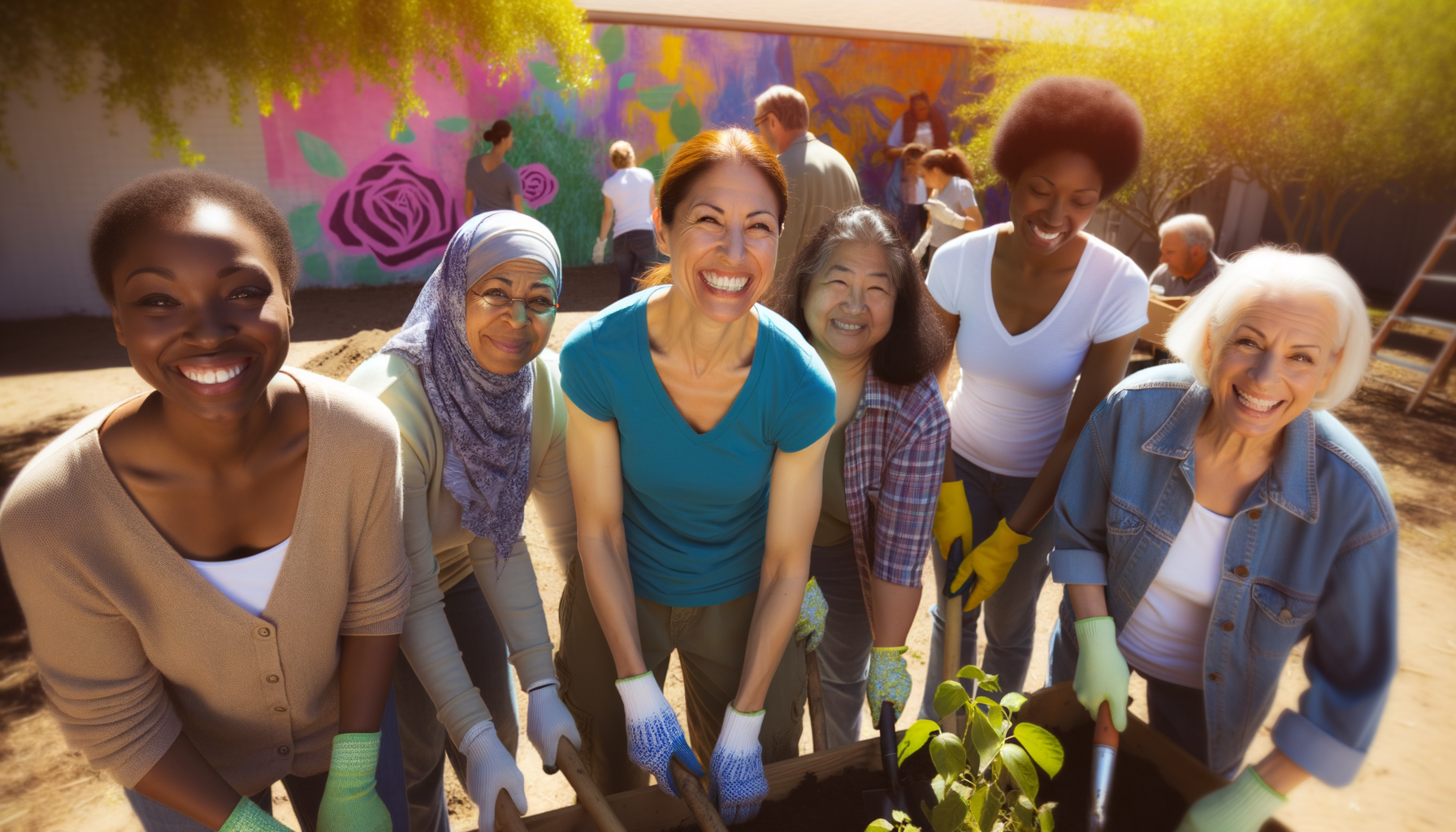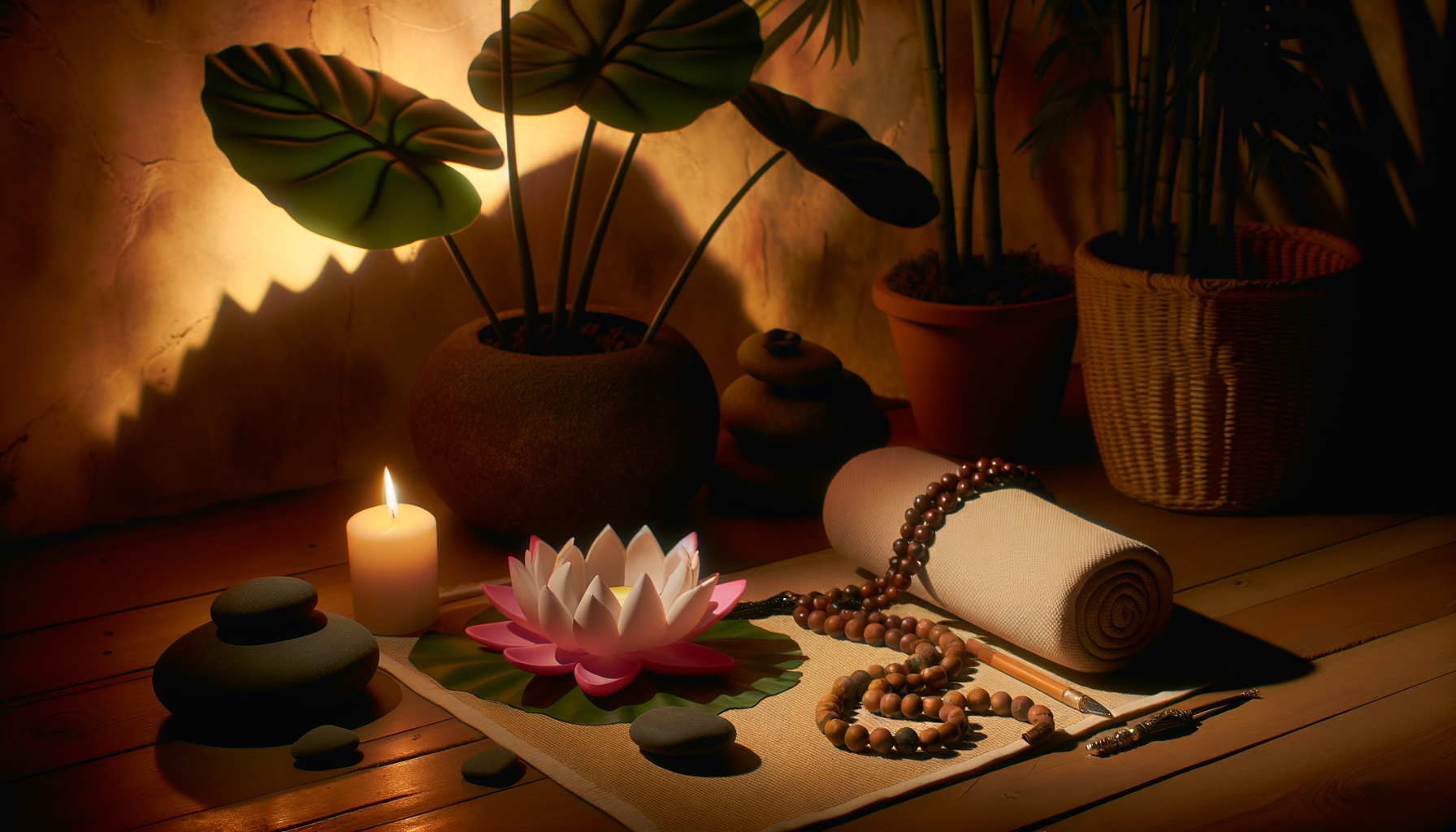
Introduction to Mindfulness
Understanding Mindfulness
Mindfulness is a form of meditation that encourages individuals to become acutely aware of their present experiences, sensations, and emotions without any form of judgment or interpretation. It involves a variety of techniques, including breathing methods and guided imagery, aimed at fostering a state of relaxation for both the body and mind. The essence of mindfulness is to break away from the habitual patterns of excessive planning, problem-solving, and the whirlwind of negative or random thoughts that can lead to mental exhaustion and stress.
The Connection Between Mindfulness and Stress Reduction
Stress is an inevitable part of life, but mindfulness offers a way to manage and mitigate its effects. By directing attention away from stress-inducing thoughts and engaging more fully with the present moment, mindfulness exercises can serve as a powerful tool for stress reduction. This practice helps individuals to experience thoughts and emotions with greater balance and acceptance, which can lead to a more stress-free existence.
The Science Behind Mindfulness
Scientific research has begun to illuminate the mechanisms through which mindfulness works. Studies have shown that mindfulness meditation can lead to changes in the brain associated with attention, emotion regulation, and self-awareness. Clinical trials have supported the effectiveness of mindfulness for a variety of conditions, including stress, anxiety, pain, depression, insomnia, and hypertension. These findings suggest that mindfulness can have a profound impact on both mental and physical health.
Benefits of Mindfulness for Everyday Living
The benefits of mindfulness extend far beyond stress reduction. Regular practice has been shown to improve attention, decrease job burnout, enhance sleep quality, and even improve diabetes control. Mindfulness exercises, such as paying attention to the senses, living in the moment, and accepting oneself, can be integrated into daily life, offering a path to joy in simple pleasures and a more compassionate relationship with oneself. By focusing on the breath and practicing mindfulness exercises like body scan meditation, sitting meditation, and mindful walking, individuals can cultivate a sense of peace and well-being that permeates all aspects of life.
Getting Started with Mindfulness
Creating a Mindful Environment
To embark on your mindfulness journey, it’s beneficial to create a space that fosters calm and concentration. Choose a quiet corner of your home, free from distractions, where you can practice mindfulness exercises. This could be a small area with a comfortable chair or cushion, perhaps with a plant or a few simple objects that evoke peace and serenity. The key is to have a dedicated space that signals to your brain that it’s time to slow down and be present.
Mindfulness for Beginners: First Steps
For those new to mindfulness, the practice begins with understanding its essence: being fully present and engaged in the moment, aware of your thoughts and feelings without judgment. Start with short, daily sessions where you focus on your breath. Sit comfortably, close your eyes, and breathe naturally. Pay attention to the sensation of your breath entering and leaving your body. When your mind wanders, gently return your focus to your breath without self-criticism.
Incorporating Mindfulness into Daily Routines
Mindfulness doesn’t have to be confined to meditation. You can integrate it into everyday activities. For example, when eating, fully experience the taste, texture, and aroma of your food. When walking, notice the sensation of your feet touching the ground. By bringing mindfulness to routine tasks, you transform them into opportunities for presence and stress reduction.
Setting Realistic Mindfulness Goals
As a beginner, it’s important to set achievable goals to avoid discouragement. Start with committing to a few minutes of mindfulness practice each day, gradually increasing the duration as you become more comfortable. Remember, the goal is not to empty your mind or achieve a state of bliss, but to cultivate a nonjudgmental awareness of the present moment. Be patient and kind to yourself as you develop this skill.
Mindfulness Techniques and Exercises
Breathing Exercises for Mindful Awareness
Breathing is at the core of mindfulness practices. It’s a simple yet powerful way to anchor yourself in the present moment. To practice mindful breathing, find a quiet space and sit comfortably with your back straight. Close your eyes and bring your attention to your breath. Inhale deeply through your nose, feeling your chest and belly rise, and then exhale slowly through your mouth. Focus on the sensation of air moving in and out of your body. If your mind wanders, gently redirect your attention back to your breath. This practice can be done for just a few minutes or extended for longer periods.
Body Scan Meditation for Tension Release
The body scan is a technique that promotes relaxation and helps release tension held in the body. Lie down in a comfortable position and close your eyes. Starting at your toes, bring your attention to each part of your body in turn. Notice any sensations, tension, or discomfort. Breathe into these areas and imagine the tension melting away with each exhale. Gradually move your focus up your body, from your feet to the crown of your head. This practice encourages a deep state of relaxation and can be particularly helpful before sleep.
Mindful Walking: Combining Movement with Awareness
Mindful walking is a practice that combines movement with awareness. Choose a quiet place to walk and start to focus on the sensations of your feet touching the ground. With each step, notice the rhythm of your movement and the feeling of your muscles contracting and relaxing. Be aware of your surroundings, the sounds, smells, and sights, but keep your primary focus on the act of walking. This exercise can be a refreshing break from a sedentary lifestyle and a way to cultivate mindfulness in action.
Mindful Eating: Savoring the Moment
Mindful eating is about fully experiencing the act of eating. Choose a small piece of food, such as a piece of fruit. Observe its color, texture, and smell. Take a bite and notice the flavors and sensations as you chew slowly. Be aware of the impulse to swallow and take your time to savor the moment. Mindful eating can transform a routine activity into a more pleasurable, conscious experience, and can also help with digestion and portion control.
Gratitude Practices to Cultivate Positivity
Gratitude practices are a way to cultivate a positive and appreciative mindset. Take a few moments each day to reflect on what you are thankful for. You can keep a gratitude journal, where you write down three things you are grateful for each day, or simply take a moment to mentally acknowledge these aspects of your life. This practice can shift your focus from what’s lacking to the abundance that’s already present, fostering a sense of contentment and well-being.
Incorporating these mindfulness techniques and exercises into your daily routine can help reduce stress and enhance your overall quality of life. They encourage a state of active, open attention on the present and can be adapted to fit any lifestyle or schedule.
Overcoming Challenges in Mindfulness Practice
Common Obstacles and How to Address Them
Mindfulness practice is not without its challenges. Common obstacles include finding time for meditation, dealing with intrusive thoughts, and managing expectations. To address these, it’s important to integrate mindfulness into your daily routine, perhaps starting with a few minutes each day and gradually increasing the duration. When intrusive thoughts occur, acknowledge them without judgment and gently redirect your focus back to your breath or the present moment. Lastly, set realistic expectations and understand that mindfulness is a skill that develops over time.
Staying Motivated and Consistent
Maintaining motivation and consistency in your mindfulness practice can be difficult, especially when the benefits are not immediately apparent. To stay motivated, set small, achievable goals and celebrate your progress. Consistency can be enhanced by practicing at the same time each day, creating a dedicated space for meditation, and using reminders or apps to keep you on track. Remember, the quality of your practice is more important than the quantity.
Dealing with Distractions and Restlessness
Distractions and restlessness are natural parts of the mindfulness journey. When they arise, it’s helpful to acknowledge them and use them as part of your practice. For example, if you’re distracted by noise, rather than getting frustrated, pay attention to the sounds as they come and go. If you feel restless, focus on the sensation of restlessness in your body. This approach turns obstacles into opportunities for deeper mindfulness.
Mindfulness in Difficult Times
Practicing mindfulness during difficult times can be particularly challenging, but it’s also when it can be most beneficial. During such periods, it’s crucial to be gentle with yourself and adjust your practice as needed. Shorter, more frequent sessions may be more manageable. Additionally, focusing on self-compassion and grounding exercises, like mindful walking or a body scan, can provide comfort and stability.
Remember, the path of mindfulness is unique for each individual, and encountering challenges is a normal part of the process. With patience, persistence, and self-compassion, you can overcome these obstacles and cultivate a more mindful, stress-free life.
Mindfulness in Relationships
Communicating Mindfully with Partners and Family
Effective communication is the cornerstone of any strong relationship. Mindfulness enhances communication by encouraging a presence that is open, non-judgmental, and focused on the current moment. When communicating mindfully, it’s important to listen actively, which means fully concentrating on what is being said rather than passively hearing the words. This involves being fully present, maintaining eye contact, and avoiding distractions. It also means speaking with intention, choosing words carefully, and expressing thoughts and feelings honestly and with compassion.
Building Empathy and Understanding
Empathy is the ability to understand and share the feelings of another. Mindfulness fosters empathy by tuning you into your own emotions and those of others. By practicing mindfulness, you can learn to respond to your partner’s feelings with understanding and kindness, rather than reacting defensively or dismissively. This deepens the emotional connection and promotes a sense of safety and trust within the relationship.
Setting Boundaries with Kindness and Awareness
Setting boundaries is essential for healthy relationships, but it can be challenging. Mindfulness helps by allowing you to recognize your needs and feelings, as well as those of others, without judgment. When setting boundaries, do so with kindness and clarity, expressing your needs assertively but respectfully. Mindfulness can help you stay calm and centered during these conversations, ensuring that boundaries are set in a way that is considerate of everyone’s well-being.
The Role of Mindfulness in Conflict Resolution
Conflict is inevitable in relationships, but mindfulness can transform how you handle disagreements. By staying present and attentive, you can better understand the root of the conflict and work towards a resolution that is satisfactory for all parties. Mindfulness encourages pausing before reacting, which can prevent escalation. It also promotes the expression of feelings in a way that is not accusatory but rather focused on personal experiences and emotions, leading to more constructive and empathetic dialogue.
“`
Advanced Mindfulness Practices
Deepening Your Practice with Mindful Meditation Retreats
For those seeking to deepen their mindfulness practice, attending a mindful meditation retreat can be a transformative experience. Retreats offer an immersive environment where one can focus on mindfulness away from the distractions of daily life. These retreats range from weekend getaways to extended stays and are often held in serene settings that foster introspection and growth. Participants engage in various mindfulness exercises, such as seated meditation, walking meditation, and yoga, while maintaining silence to encourage inner reflection. The intensity of these retreats can significantly enhance one’s ability to remain present and cultivate a deeper sense of peace.
Integrative Mindfulness: Combining Techniques for Greater Effect
Integrative mindfulness involves combining different mindfulness techniques to create a personalized practice that addresses individual needs. By integrating practices such as breathing exercises, body scans, and mindful movement, practitioners can target specific areas of stress or discomfort. This tailored approach allows for a more comprehensive mindfulness experience, as it draws from the strengths of various practices to support overall well-being.
Mindfulness and Visualization for Personal Growth
Visualization is a powerful tool that can be used in conjunction with mindfulness to foster personal growth. Through mindfulness and visualization, individuals can create vivid mental images that represent their goals or desired outcomes. This practice can enhance motivation and clarify one’s intentions, making it easier to manifest positive changes. By remaining grounded in the present moment while visualizing future successes, one can bridge the gap between current reality and future aspirations.
The Practice of Loving-Kindness Meditation
Loving-kindness meditation (LKM) is a practice that focuses on cultivating compassion and unconditional positive regard for oneself and others. It involves silently repeating phrases of goodwill and kindness, such as “May I be happy” or “May you be free from suffering.” LKM can be particularly beneficial for enhancing emotional resilience and fostering a sense of connectedness. Regular practice of loving-kindness meditation has been shown to increase positive emotions and decrease negative ones, contributing to a more stress-free and harmonious life.
Sustaining a Mindful Lifestyle
Creating a Supportive Community for Mindfulness
Embarking on the journey of mindfulness is both a personal and a collective endeavor. A supportive community can provide encouragement, inspiration, and shared experiences that reinforce the practice. To create such a community, one can start by connecting with local meditation groups or online forums where experiences and insights can be exchanged. Engaging with peers who are also committed to mindfulness fosters a sense of belonging and accountability, making it easier to maintain a consistent practice. Additionally, participating in group meditations or retreats can deepen one’s practice and provide a sense of solidarity.
Continual Learning and Adaptation of Mindfulness Practices
Mindfulness is not a static skill but a dynamic process of continuous learning and adaptation. As life circumstances change, so too might the ways in which mindfulness is most effectively practiced. Staying open to new techniques, teachings, and perspectives is crucial. This might involve reading books, attending workshops, or exploring different forms of meditation. The key is to remain curious and flexible, allowing mindfulness to evolve in a way that best supports one’s well-being and personal growth.
Mindfulness as a Lifelong Journey
Viewing mindfulness as a lifelong journey rather than a destination can be incredibly liberating. It is a path of endless discovery, where each moment offers an opportunity for presence and awareness. Embracing this perspective helps to cultivate patience and self-compassion, recognizing that there will be times of challenge and times of ease. The commitment to this ongoing journey is a commitment to oneself and to the unfolding of life with all its richness and complexity.
Resources and Tools for Ongoing Mindfulness Practice
To sustain a mindful lifestyle, it is helpful to have a toolkit of resources and practices. This might include mindfulness apps, guided meditations, journals for reflection, or even simple reminders in one’s living space that prompt mindful awareness. Technology can serve as an ally, with digital platforms offering structured programs to support daily practice. Books and teachings from respected mindfulness practitioners can also provide guidance and inspiration. Ultimately, the most effective tools are those that resonate personally and encourage a regular, dedicated practice.
By nurturing a supportive community, embracing continual learning, viewing mindfulness as a lifelong journey, and utilizing a variety of resources and tools, individuals can sustain a mindful lifestyle that enriches their experience of life and fosters a deep sense of inner peace and clarity.








